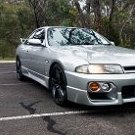R32 Ecu Change
Announcements
-
Similar Content
-
Latest Posts
-
Strictly street. Just wanting a bit more power 🫡 Have baby seat in the back too 🤣
-
By Murray_Calavera · Posted
Yeah ok, it'll be expensive. But it is what it is. How do you plan to use the car? Any track work? -
By svenskalice · Posted
I do have their “Nissanie Motorsports Co.” vin plates, but I am curious if anyone would have more info on them. Like how many cars they’ve imported and whatnot -
Been a long while since i have updated this money pit lol. Have had a few tune related issues with the car, first blowing the frost plug out the back of the head and then blowing the headgasket 3 months later, which has now been retuned and sorted. Done a few little changes along the way as well, i wasn't happy with the wheel and brake setup, so start of last year i managed to get myself a set of r35 brakes and nismo lmgt4 18x10.5 +15 Upgraded to now running a Precision Gen 2 6870 with a 1.15ar, to be honest felt more like a downgrade as the car feels much lazier around town compared to the Gen2 6466 previously. 0761719E-5683-43F7-BD3B-4BD94335DFF4.mov
-
Hi there, i am currently using the Elmers Racing Billet merge collector, we are using sch40 tubing and 1.5" ID, no cracks so far. however if i was to do it again, i would go sch10 with 1.25" runners
-






Recommended Posts
Create an account or sign in to comment
You need to be a member in order to leave a comment
Create an account
Sign up for a new account in our community. It's easy!
Register a new accountSign in
Already have an account? Sign in here.
Sign In Now